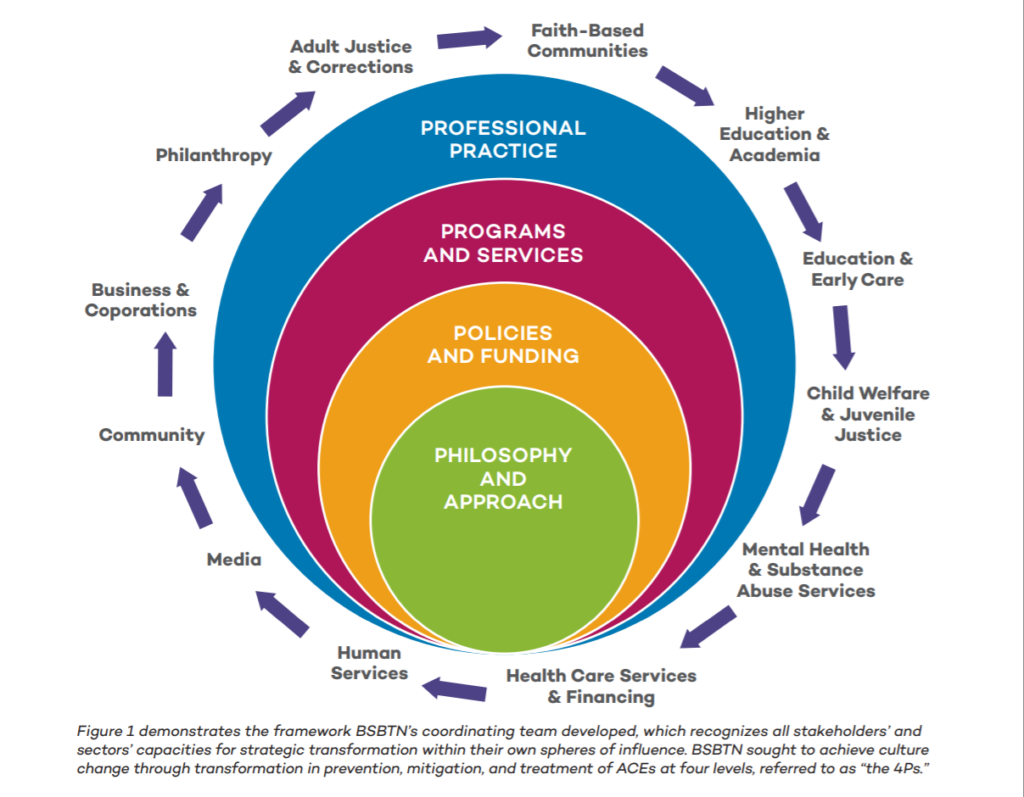The COVID-19 pandemic may be increasing Adverse Childhood Experiences and trauma and demonstrates the importance of responding to them at the state level.
Executive Summary
Adverse childhood experiences (ACEs) can have a significant impact on a persons’ life, including on their health and well-being into adulthood. Interest in preventing and addressing the consequences of ACEs has grown across sectors and is shaping policy discussions among state and local leaders who are eager to build capacity to support effective prevention and intervention. Building Strong Brains Tennessee (BSBTN) is a public/private partnership established to prevent and mitigate the impacts of ACEs for all Tennesseans and to promote statewide economic development and prosperity. BSBTN is jointly led by the executive, legislative, and judicial branches of state government and mobilizes knowledge derived from the science of brain development and communication science.
The National Governors Association Center for Best Practices (NGA Center), in partnership with the Duke-Margolis Center for Health Policy (Duke-Margolis), have established a 5-state learning collaborative on ACEs. In this case study, NGA Center, Duke-Margolis and a former Tennessee leader highlight BSBTN and its key elements of success as one model from which other states can learn. Success of the initiative can be attributed to the widespread commitment to address, prevent, and educate throughout the state about the long-term impact of ACEs.
The following factors are critical to the success of BSBTN:
Champions across the three branches of government, among foundations and within the community. Strong leaders at every level embedded the mission of BSBTN in public remarks, policy discussions and in the community.
Public/Private Collaboration. The public/private relationships that serve as the foundation for BSBTN’s structure has assured local solutions are being developed to address community issues.
Empowering Communities to Act. Communities—fundamental to the success of BSBTN—were prepared and supported by the three branches to act and innovate.
Focus on Creating Culture Change. Transforming thinking and actions across all functions of society led to culture change, emphasizing making changes in an individual or groups’ own sphere of influence.
Evidence-Informed Messaging. Extensive use of research-tested terminology and methods of communication permitted common understandings of the mission and expectations for culture change. BSBTN also periodically assessed what works and refined their approach knowing culture change is not a sprint but a marathon.
Sustainable Resources. Financial, in kind, and programmatic supports across government and from key partners helped get the initiative off the ground and maintain ongoing work. Approaches to assure sustainability both with and without dedicated fiscal resources were critical to facilitating future work.
Authors
This publication was developed by Lauren Block and Sweta Haldar at the National Governors Association Center for Best Practices (NGA Center), in partnership with Mary Rolando, formerly with Building Strong Brains Tennessee, and Elaine Chhean and Hemi Tewarson at the Duke-Margolis Center for Health Policy (Duke-Margolis).
Acknowledgements
NGA Center and Duke-Margolis thanks the current and former officials from Tennessee for allowing us to highlight their work in this publication. NGA Center and Duke-Margolis also thanks the Robert Wood Johnson Foundation for its generous support of this publication and the project that made it possible.













